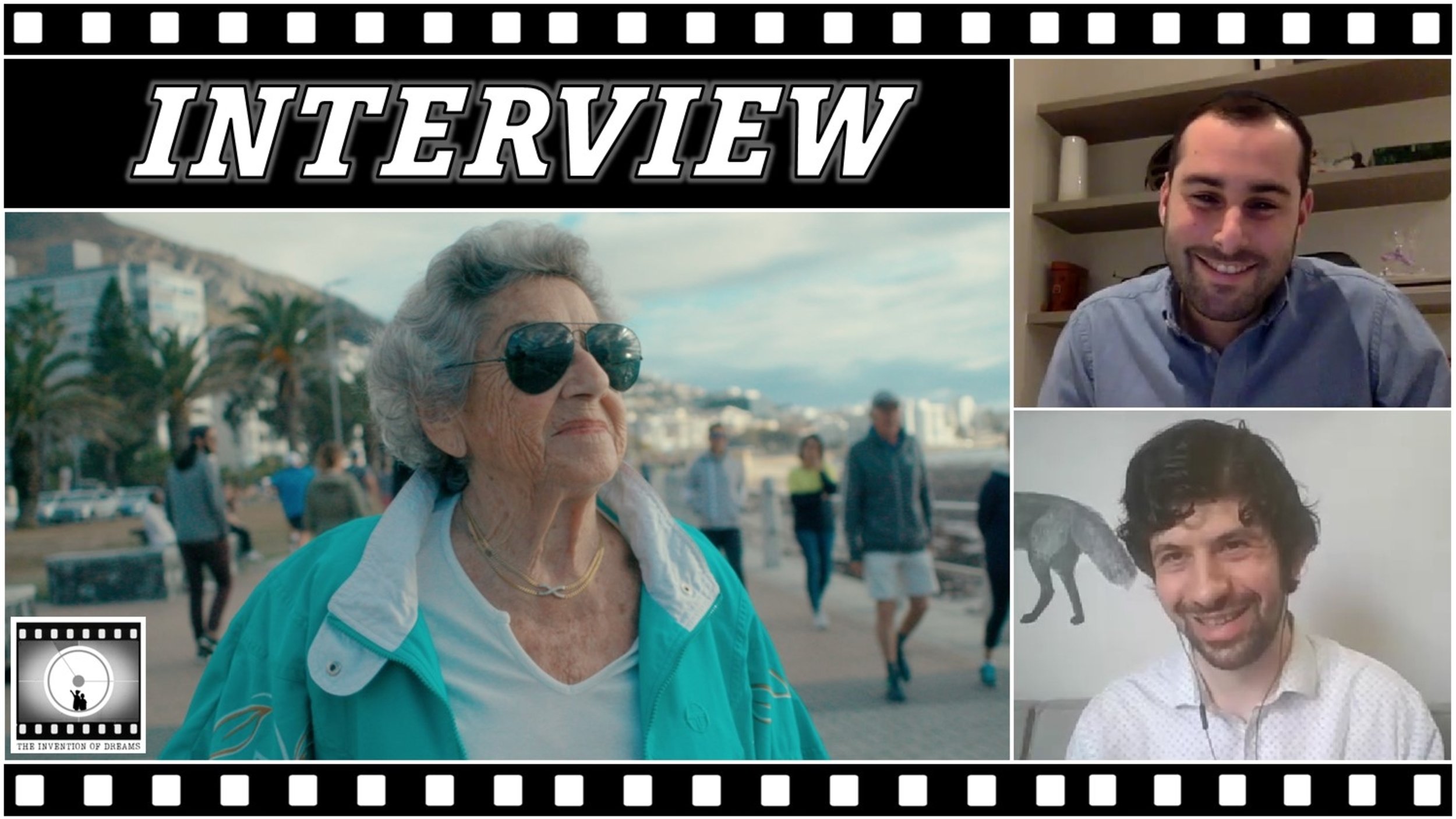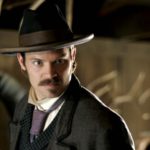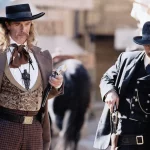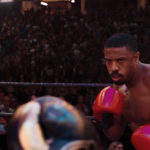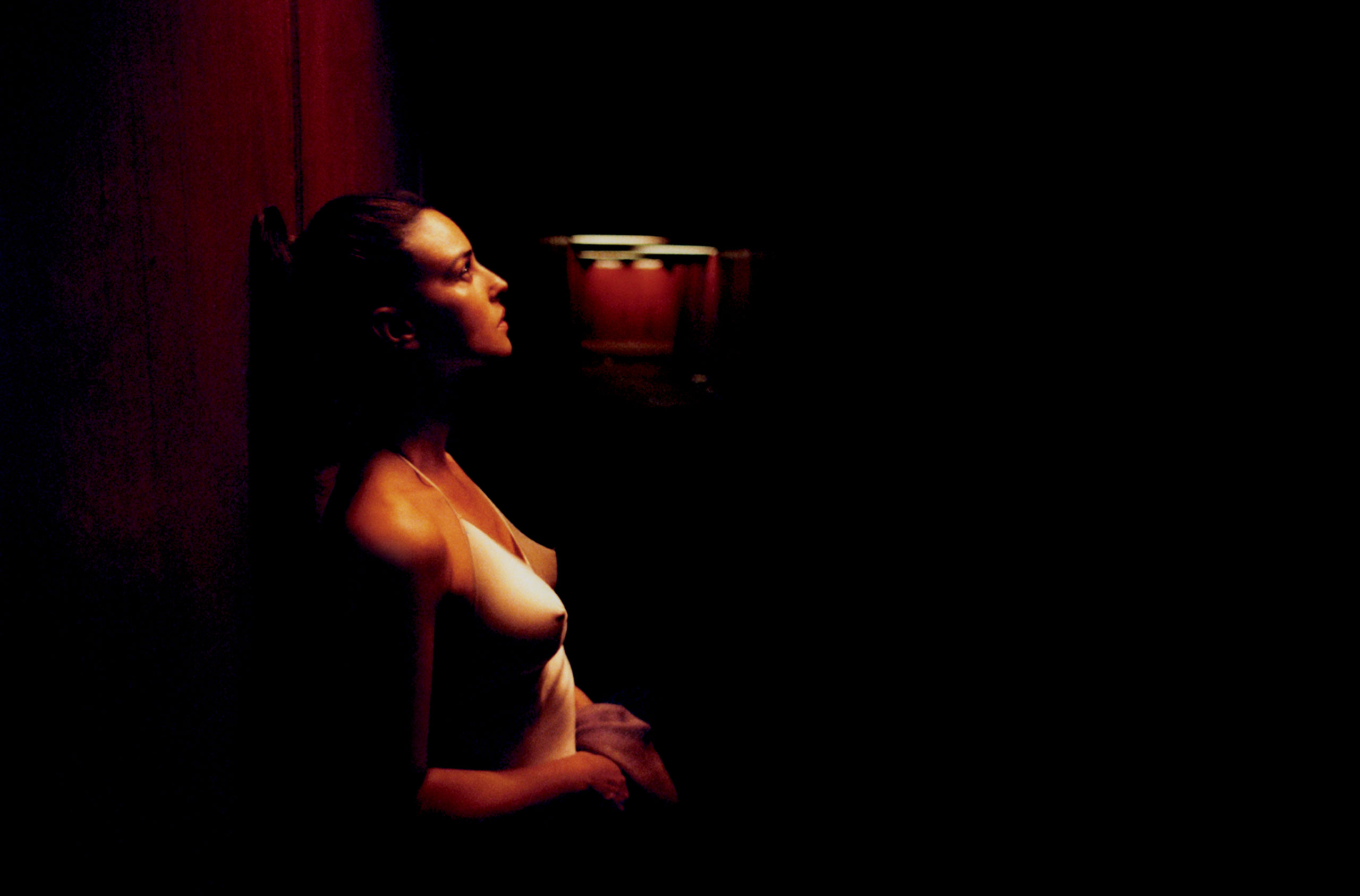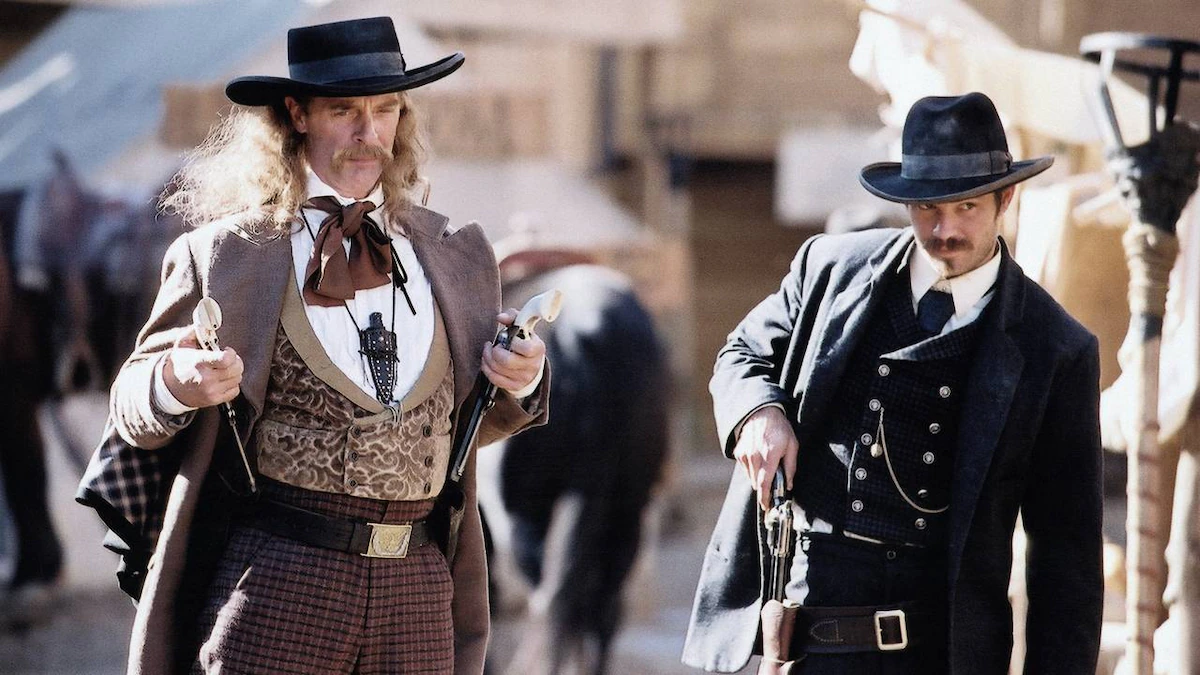I had the pleasure of interviewing Jordy Sank, the affable director of I Am Here. He first met Ella Blumenthal many years ago and his affection for her radiated through our discussion as much as it does through his careful, loving curation of her story.
What follows is a transcript of our conversation. However, I encourage you to watch our discussion, as there’s so much more in Jordy’s expression than words can capture. I hope this inspires you to engage with I Am Here, to see Ella’s story for yourself, and to wrestle with her advice.
Video:
Transcript:
The following has been lightly edited for clarity and conciseness.

Sank’s Motivation in Making I Am Here
You met Ella earlier in life and you wanted to tell this story. What took you here?
Sank: I’d met many holocaust survivors growing up. I’d had a lot of opportunities to hear them speak. There was something about Ella and her character that really just struck me from a young age. I really wish that you and everyone could get the opportunity to just be in a room with her because the whole room lights up. She has this zest for life that is unparalleled. I’ve never seen it in anyone else. You think to yourself, [here’s] someone who has been through such darkness, one of the darkest moments in human history, and she’s uplifting those around her. She really is the light. For me, that was something I really wanted to capture on film. Besides telling her story of surviving the Holocaust and her trauma associated with it, I think it was really important to communicate her zest for life so that we could also take a little a bit of that and include it in our own lives.
Why Sank Told This Story Through Juxtaposition
I love the juxtaposition that comes through in the film. Around the time she finds a piece of the Haggadah and we splice forward to today or to thinking about Shabbos. Was that an intentional choice to go back and forth from these very dark moments to these moments of light?
Sank: Yes. It’s great to look at the present day and then get the context from the past. I’ll give you an example. There’s one moment that she says that she makes five cups of tea using one tea bag. You look at this and think “this is a frugal old lady!” but then when you understand that she was once stealing little shards of potatoes. She was starving and she had to risk her life to get that food. It gives you the context. I think the juxtaposition of going from past to present was one of the intentions. The other was [that] Ella has this beautiful spirit and she doesn’t let her past define who she is. So we thought it was very important to keep coming back to the present and show how she’s living her life today and how she has this positive outlook on life and this vigor.
Sank on Family, Togetherness, and Turning the Specific into the Universal
One thing that I really love is how you tell the story of Ella and her niece, Roma. There’s this facetime between them that’s incredibly sweet. There’s this idea of sisterhood or togetherness that gets them through. She lost 23 out of 24 family members and then today, Ella has a really universal message having come out of the Shoah. Can you talk more about that?
Sank: On your first point about her niece Roma, they were everything for one another. I think one of the reasons that Ella survived was because of Roma and I think one of the reasons Roma survived was Ella. I think they had each other to push each other and to keep each other going. They were guardian angels, they were mothers, they were sisters, they were everything to one another. To answer the second part of your question, remind me again what it was?
That Ella manages to take this very specific interpersonal connection and she branches out and goes and talks with people. I was reading about her, and she wrote an open letter just this year and she’s given testimonials otherwise. Even talking to her grandchildren or her great grandchildren about how this is true, how this is for everyone. She takes this very specific experience and grows it out.
Sank: I think Ella really is all about relationships. It was amazing to see! Even the crew, while we were filming, she had her own nicknames for the crew on the set and she was able to connect with everyone. And also it’s her character. She really is an amazing character. She wants to educate far and wide about what she’s been through so that history doesn’t repeat itself. She has spoken to schools; she’s written open letters.
What was also amazing for us in making the film is that we filmed around her 98th birthday weekend and it really was amazing to see the family in a very intimate setting about to sit down with her. I think sometimes when it’s your family member and it’s so close, you kind of shy away from it or you don’t want to engage too much, so it was amazing to see them interacting with their mother and being able to ask their mother about what she went through and about specific moments in her survival.
Ella is just remarkable in how she’s able to connect with anyone in her path. I think it’s also due to one of her messages. One of her messages through the film is that she wants to foster love and understanding. She says that “for people to meet one another, even if we come from completely different backgrounds and we have opposing view, we sit and we just discuss and we’ll find that there are commonalities and there’s more that unites us than divides us.” Through understanding one another and our views and perspectives, then we can appreciate one another and, perhaps, love one another.
Which is the best possible message!

Sank on Trauma, Faith, and Watching Ella’s Story Bloom
One thing you said really struck me. I’m Jewish and I grew up hearing about the Cossacks from my great grandmother, who was from Odessa. I have a two fold question here: identities change. My family went from fairly orthodox to quite secular in the States. Did Ella have a sort of similar journey? And did you grow up with that same sort of experience? The power of her faith is obviously really central. She’s frum and that’s not really specified and I’m curious if you could unpack all of that.
Sank: So, after surviving the war, she makes her way to South Africa and she really shies away from telling her story. She gets her tattoo removed because being a survivor at the time was extremely taboo. People saw survivors as broken people. Why would you want to be friends with or married to someone who is broken or damaged goods?
She didn’t tell her story for many years and she only really started telling her story to her children when they were much older. When they used to hear her crying, screaming in the middle of the night and she says that was actually her thinking the Nazis were going to come and take away her children.
She really actually only started [speaking] about 20 years ago or so to the public in community centers. So this is relatively new. That’s the thing about trauma. You can’t shake the trauma and what you’ve been through. I think the amazing thing in speaking with her is that we were really able to unpack that. We had 7 hours of essentially her life story when we finished recording her. Just an interview of her full life story. I’ve interviewed her over the years a few times before and the more and more we spoke about certain instances, the more she would open up and the more she would let us into her world.
I haven’t spoken about the faith but the remarkable thing about Ella is that she kept her faith throughout her survival through the Holocaust until now. Her faith is never diminished. If she were to have lost her faith, I think we would all understand. Many people lost their faith and it’s not something we can argue with. The incredible thing about her is that she carried this faith around. She almost saw God as walking alongside her and holding her hand, and that the Holocaust wasn’t an act of God. It wasn’t even humans. It was inhumans that were so horrible and hateful that they made the Holocaust a possibility.
Sank on Conveying Ella’s Story Visually.
There’s a choice you made that I loved where she’s standing in the Cape Town museum and there’s stock footage projecting onto her. You don’t use a lot of stock footage. There’s a lot of animation, a lot of family portraiture. Can you expand on that one specific choice and then broadly?
Sank: We use stock footage sparingly, in the introduction and at the start of the Warsaw Ghetto. We only come back to the stock footage at liberation. We thought it was very important to show stock footage because these are real events that took place. We really, really loved animation in depicting Ella’s stories. For instance, her survival of being pushed into a gas chamber, it would not have had that same effect with stock footage. The animation lets you really empathize with her as a character and go on this journey with her. I think it’s also animation that really makes it a lot more palatable, especially to a younger audience. The younger audience are going to have to be the ones who know what happened in the Holocaust so that history doesn’t repeat itself again. That’s really why we opted for animation. Another beautiful example of animation is that it really helps get into Ella’s head. When she finds a fragment of the Haggadah, we have her flying through the sky, seeing these Hebrew letters she hasn’t seen in years. Even if we had to recreate it live, it’d be difficult to do and obviously there’s no stock of that. There’s endless possibilities with animation and we really wanted to make this a dynamic film. Ella’s voice, just the way she tells her stories and the way she describes it, you almost feel like you’re there. We really felt like we had to do the way she tells the stories justice by showing it in a dynamic and interesting way.

Sank on the Resurgence of Antisemitism and Hateful Ideologies
Jumping off that, there’s one other place where you use stock footage, and that’s at the very start of the film where you’re describing this rising climate of antisemitism, particularly in North America, the UK, and Continental Europe. There’s both rising antisemitism and a New Antisemitism. Ella does this really wonderful thing where she tries to memorialize her memories while she can, so that people understand and can take it with them. She’s trying to make a more universal message. To what extent to do those factors come into play, taking the Holocaust and making this film right now, in this moment, and how it might reverberate.
Sank: The montage at the start of the film, you’re talking about of all the antisemitic, Holocaust denial, neo-Nazi rhetoric, where we were almost done making the film and started showing it to people. The reaction we got was really surprising. People said “why did you need to make another Holocaust film? Hasn’t it been done before? This isn’t relevant to now, this was so many years ago.” We thought it was really important. Just look at the news. History is repeating itself in front of our eyes. People have not learned from the mistakes of the Holocaust and what hating people can really do. Antisemitism is alive and well. Neo-Nazi numbers are on the rise. We have to hear Ella’s story so we can learn from the past to build a brighter, better future.
Just look at current affairs and what’s happening today between Russia and Ukraine. It’s really unfathomable that we feel like we’re watching a war this extreme play out right in front of our eyes. It’s almost like watching World War II now on social media and on our TVs. This film… I feel like it’s now more relevant than ever. People have not learned from the Holocaust. Ella’s message is one of love and tolerance and the world needs that more than ever.
I’d go a step further. I’d say people have not only not learned, but they’ve taken the wrong message. Putin employs a sort of Holocaust inversion, led by a Ukranian Jew in Zelensky, is a neo-Nazi state, which is really perverse and goes to exactly what you’re talking about.
There’s a point you just made which really struck me. Why make another Holocaust movie? It made me think of Dara Horn’s “People Love Dead Jews”. Ella is very much a living Jew, but there’s this question where if you center the Holocaust so much, you get this thing where [people say] “well, that’s not the Holocaust”. Student groups and student activists singling out Jewish groups? Not the holocaust! Fringe politicians who are pretty clearly antisemitic with dog whistles which are quite loud? Well, that’s not the Holocaust. Do you think that by centering Ella’s story and particularly what she went through, we can think about how this led to the Holocaust and how we’re going back down the same roads towards genocide?
Sank: It’s crazy to see where, living in the age we are now, everyone is so woke and different nations are so understanding [that] people are different from one another. It’s crazy to see the extremism and the hatred around the world, especially for Jews. Like you’re saying, it’s never outright hatred because that’s too much. It’s always hidden behind the curtain. It’s not antisemitism. It’s not Holocaust denialism. It’s something else.
I think the only way to counter that, and it’s a hard thing to do and it’s really more in theory, but the way Ella approached a South African influencer who was spitting out antisemitism and Holocaust denying rhetoric was to approach with love. “I’d love to meet with you. I’d love to sit down with you, and let’s talk. Let’s exchange ideas and we can find more common ground” than the hatred you’re talking about. I think it’s easier said than done, but if Ella, who has survived the Holocaust, can do that with someone who denies the Holocaust, then all of us who come from our different backgrounds, beliefs, we can do that with people who are different from us and I think that’s what we need to do.
I wholeheartedly agree with you.
The Butterflies!
I want to thank you for making this film and I have one other question for you. The butterflies! Can you talk about them?
Sank: [laughs] So, the butterflies are our way of representing faith and hope. What I love about the butterflies. You know what I love about the butterflies? Everyone who watches it has a different representation and that’s the beauty of art! We all take our own perspective, we’re able to see the butterfly and come up with our own meanings. I don’t want to tell you too much of my meanings but the main one was the hope the butterfly symbolized.

I Am Here will be released in select theaters today, March 11, 2022.
Please read our further discussion of the issues raised in the film here: Why is this Holocaust survivor story different from all other Holocaust survivor stories? A Discussion of “I Am Here”



